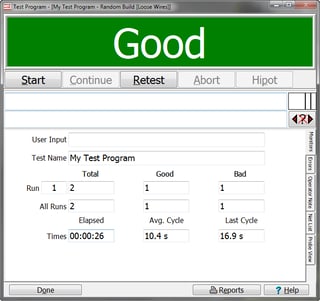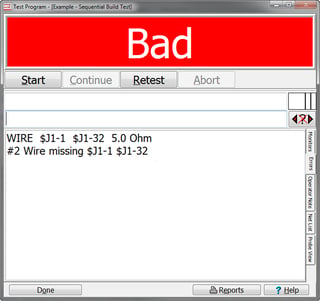The results from a cable test are specific and detailed, but do you know what they mean? Can you be sure an error is in the cable? Or is it in the fixturing or testing environment? Understanding the results of a test is an important part of testing.
The following examples of test results will help you understand the cause for the result and what you can do about it.
Good Test:
The cable matches the specifications of the test program. There are good connections between points, sufficient insulation separating points that should not touch, and all wires reach their intended destinations.
Wire Missing:
The tester did not detect a connection between two specified points of contact. Besides an actual missing wire, there could be other reasons for this error such as FOD on the contact or a recessed contact. There may also be an incorrect instruction in the test program.
Short:
The tester finds connections between points where there should be no contact. This could be caused by crimping problems, solder, connectors touching during testing, and other issues. Once you understand the cause of the short, you can repair it and avoid it in the future.
High Resistance:
The tester identifies an expected connection, but there is too much resistance for the tester to confirm it is a good connection. The high resistance may be caused by the cable or test fixture, but you may have set the connection resistance setting too low within the test program. Check your specs against the test program to confirm that your settings are correct.
More errors:
Understanding the reasons behind testing errors will improve cable testing and will help prevent future errors from occurring. To learn about other common errors and the solutions, check out our article in the Cirris Learning Center.

Further Reading:
3 Ways to Set Yourself Up for Wiring Errors
Is Humidity Causing an Error?
Test Fail? Who Do You Blame?